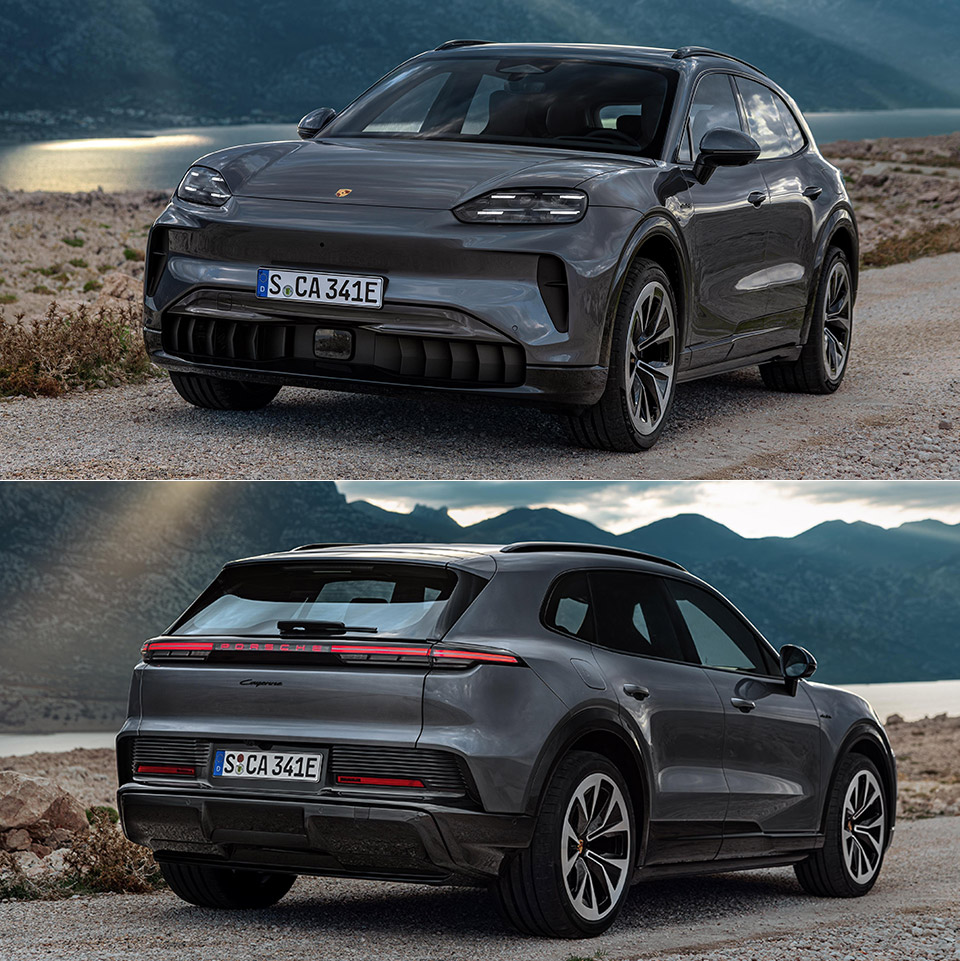
Porsche revealed the 2026 Cayenne Electric lineup this week, bringing their typical blend of speed and utility to the world of battery-powered automobiles. There are currently two options: the base Cayenne Electric and the Cayenne Turbo Electric. Both share an Audi-sourced electric platform, but Porsche engineers have expanded the wheelbase out by five inches to accommodate the wider frame, resulting in extra internal space, particularly for passengers in the backseat. Expect delivery of this new model in the United States to begin in late summer 2026.
The Cayenne Electric is equipped with two electric motors, one up front and one in the back, which drive all four wheels. The base model is expected to produce 402 horsepower under normal driving conditions, 435 with launch control enabled, and 615 pound-feet of torque. With that much power, it can accelerate from 0 to 60 in 4.5 seconds and reach speeds of up to 143 mph. But then there’s the Turbo Electric, which pretty much raises the bar on everything. It starts with 844 horsepower and adds an additional 173 horsepower for 10-second bursts via a push-to-pass button, eventually reaching 1,139 horsepower and 1,106 pound-feet of torque during launches. That equates to a 0 to 60 mph time of 2.4 seconds and a top speed of 162 mph.
- BUILD A RACING LEGEND – Boys and girls ages 9 years old and up can construct the LEGO Speed Champions Porsche 911 GT3 RS Super Car (77239) building...
- AUTHENTIC PORSCHE DETAILS – Young builders can recreate the real-life vehicle's signature elements including the famous rear wing, air intake...
- 1 PORSCHE DRIVER MINIFIGURE – Kids can place the driver minifigure with helmet and red Porsche Track Day Experience outfit behind the wheel to stage...
The 113 kWh battery is housed beneath the floor and is fueled by an extremely high-spec 800 volt system capable of delivering up to 400 kilowatts to properly fitted chargers. When the conditions are ideal, you can go from zero to 80 in under 16 minutes. Even better, regenerative braking can recover energy at an astonishing rate of 600 kilowatts, allowing for most stops without using the brakes at all. To be clear, the Turbo model does include the option of carbon-ceramic rotors. The Cayenne Electric also demonstrates its practical side, with a decent 7,716 pound towing capability, meaning these new automobiles can take on both trailers and and twisty roads.
While the Cayenne electric retains the iconic Cayenne design, you can tell that Porsche has sharpened every edge and smoothed out the contours for a significantly enhanced aesthetic. The whole body measures 196 inches long, 78 inches wide, and 66 inches tall, but the longer wheelbase helps to smooth out the ride. Other features include a very low hood and tiny LED headlights up front, as well as frameless doors and a mild roof slope, which all contribute to a very appealing coupe-like appearance. They’ve hung a full-width light strip across the back of the car, creating a cool three-dimensional impression. Naturally, the Turbo model receives the extra touches, with Turbonite bits and bobs in silver everywhere, from the badges to the wheel faces.
Aerodynamics play a big role here, with active flaps in the front grille opening only when cooling is needed and a rear spoiler adjusting based on speed and load. On the Turbo, unique blades pop out of the rear corners above 36 mph, reducing drag enough to add a few miles of range. The result is a slippery 0.25 cd. For dirt roads, an available off-road kit replaces the front bumper with one that increases the approach angle but sacrifices some efficiency. Wheels range from 20 to 22 inches across nine styles, with 13 standard colors and infinite custom colors through Porsche’s paint-to-sample program.
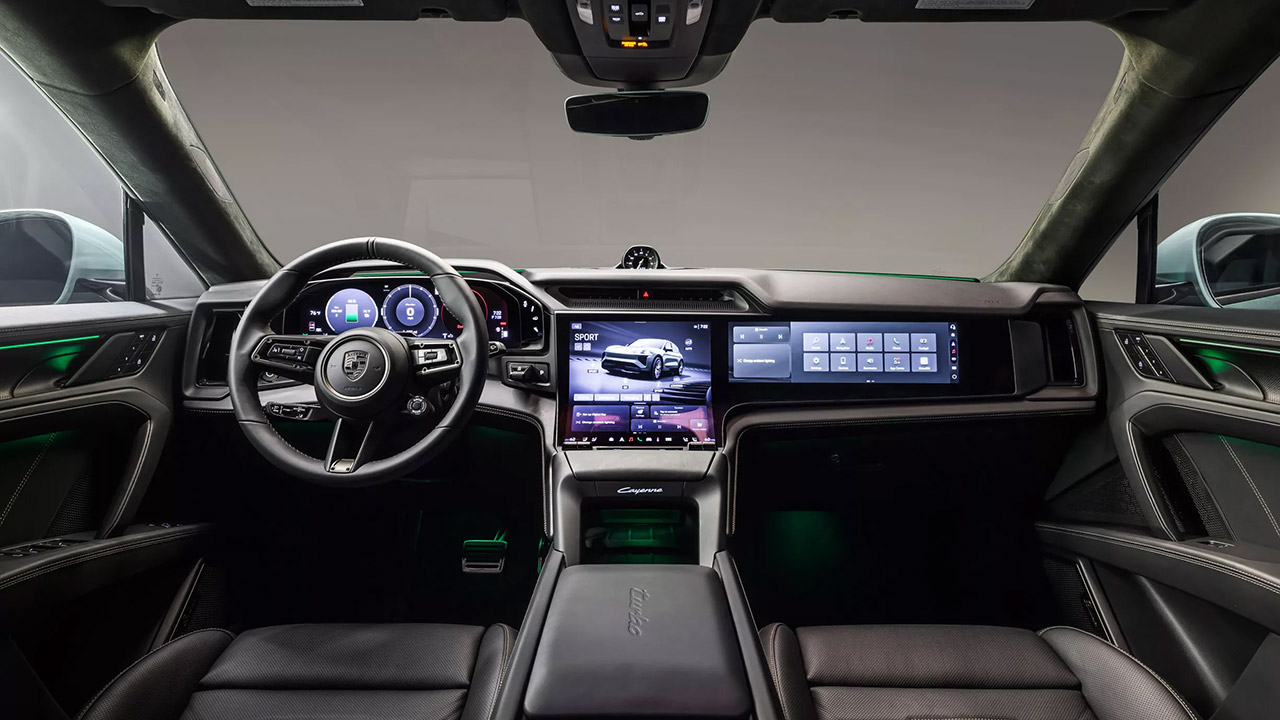
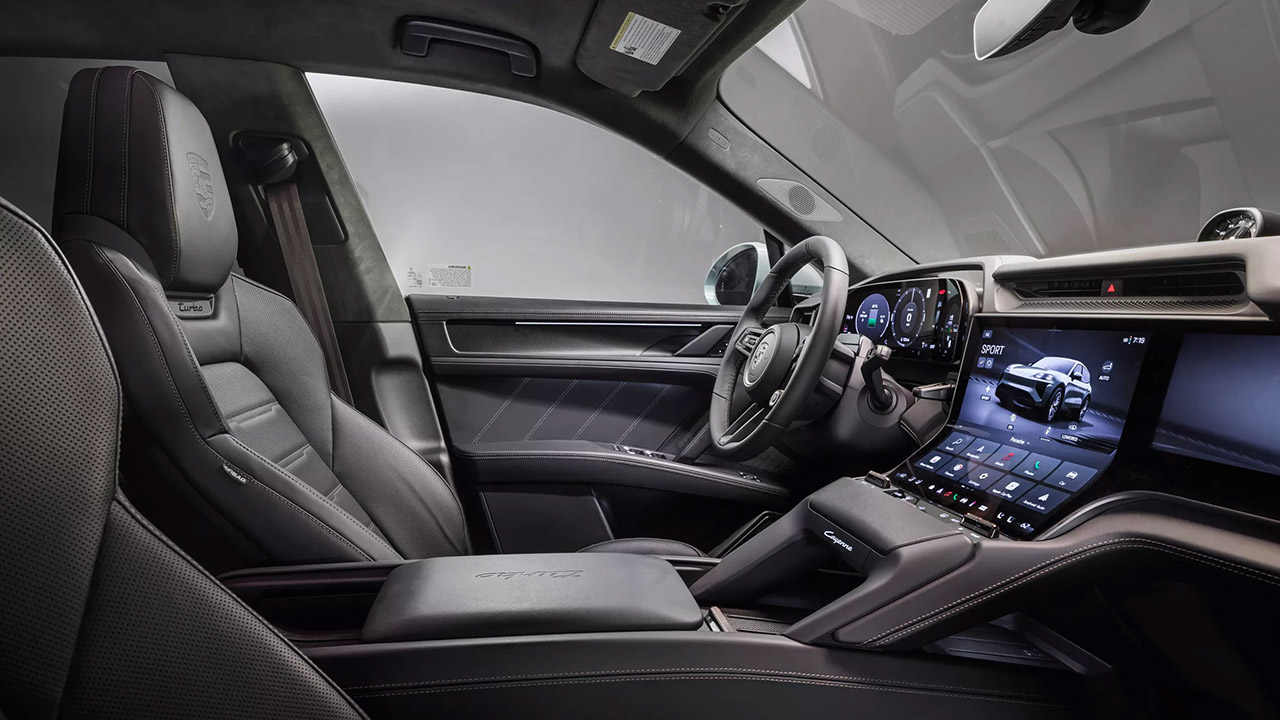

The dashboard is centered around a curved OLED screen called the Flow Display, which splits into a 14.25-inch instrument cluster and a central infotainment panel. An optional 14.9-inch screen for the front passenger mirrors plays movies and games. On top, an augmented reality head-up display projects an 87-inch virtual vision 33 feet ahead with directions and notifications. Voice commands and questions are handled by an AI assistant, while physical dials control climate and volume. Apps to stream music or play games while charging are all updated over the air. A digital key lets you access up to seven people via phone or watch. Lighting flows throughout, animating welcomes or charging status, while mood settings integrate seats, sounds and glows into one experience.
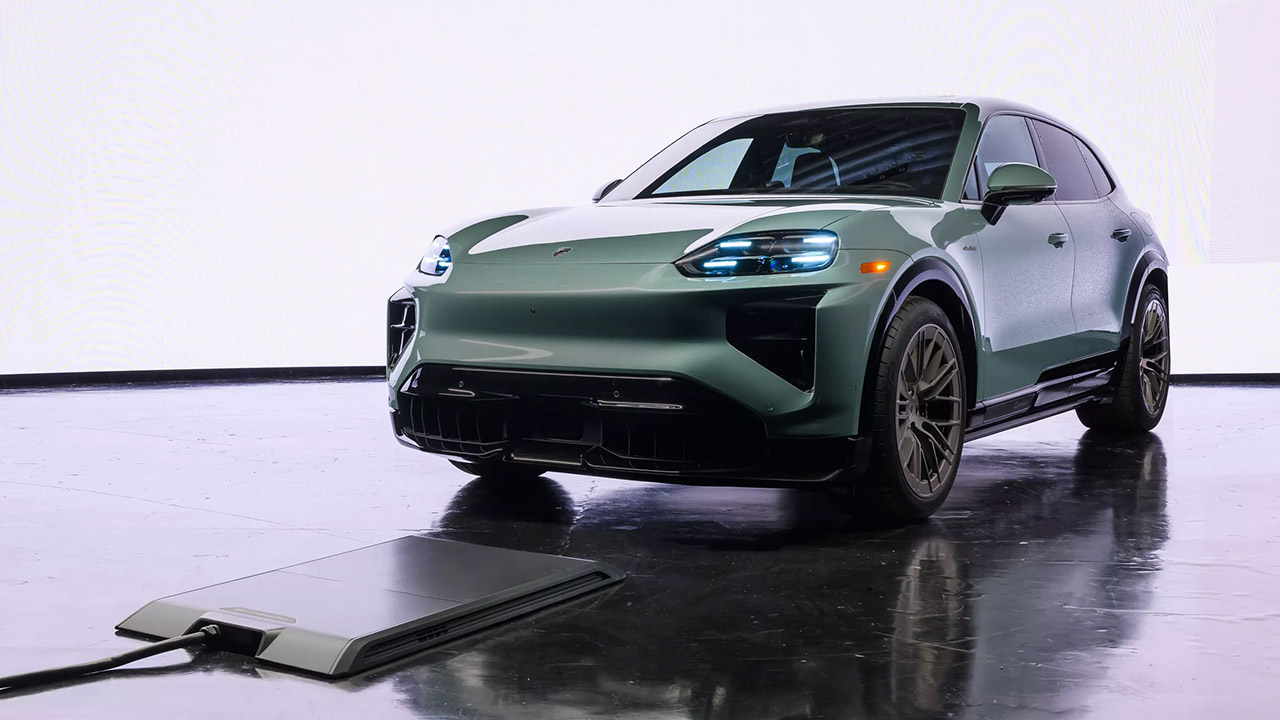
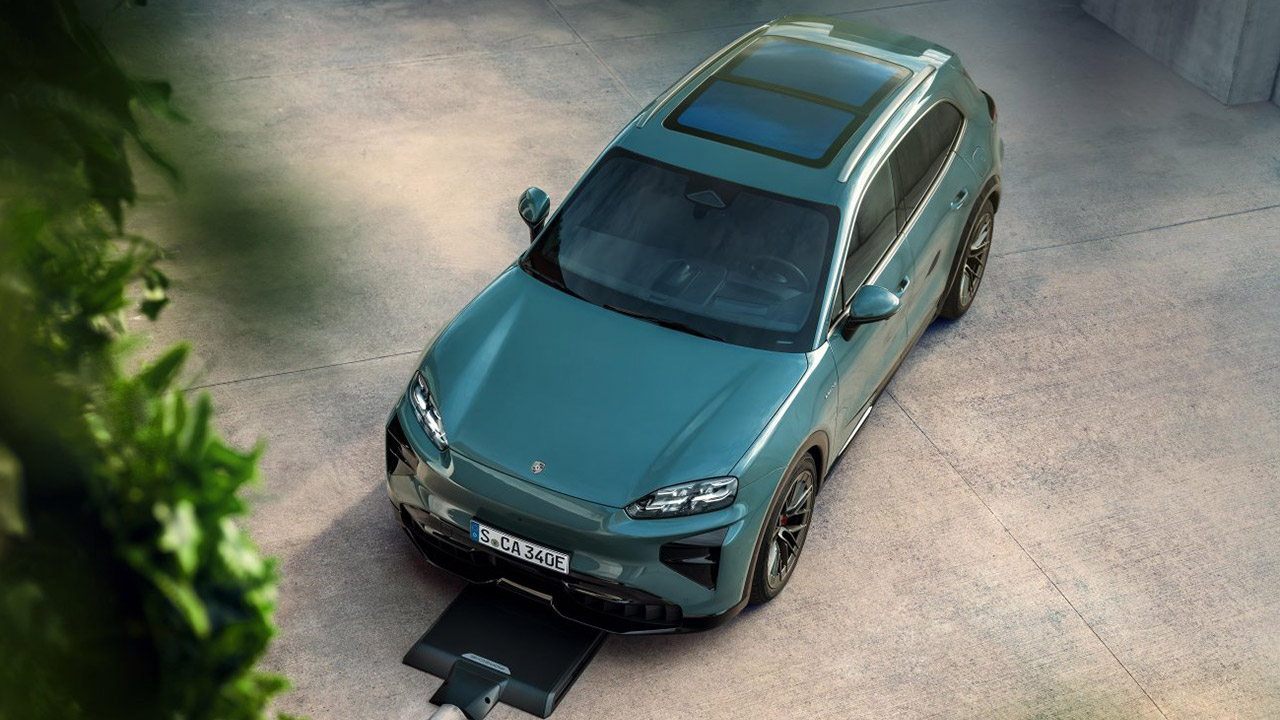
Porsche claims that the Turbo Electric can drive 350 miles on a full charge in real-world testing, although official EPA figures will be provided when production approaches. The charging ports include a standard NACS connector for Tesla Superchargers, a J1772 for residential use, and an adapter for CCS fast charging. Wireless charging mats, a first for the brand in the United States, generate 11 kilowatts without the use of cords; the car lowers itself onto the pad and starts up.
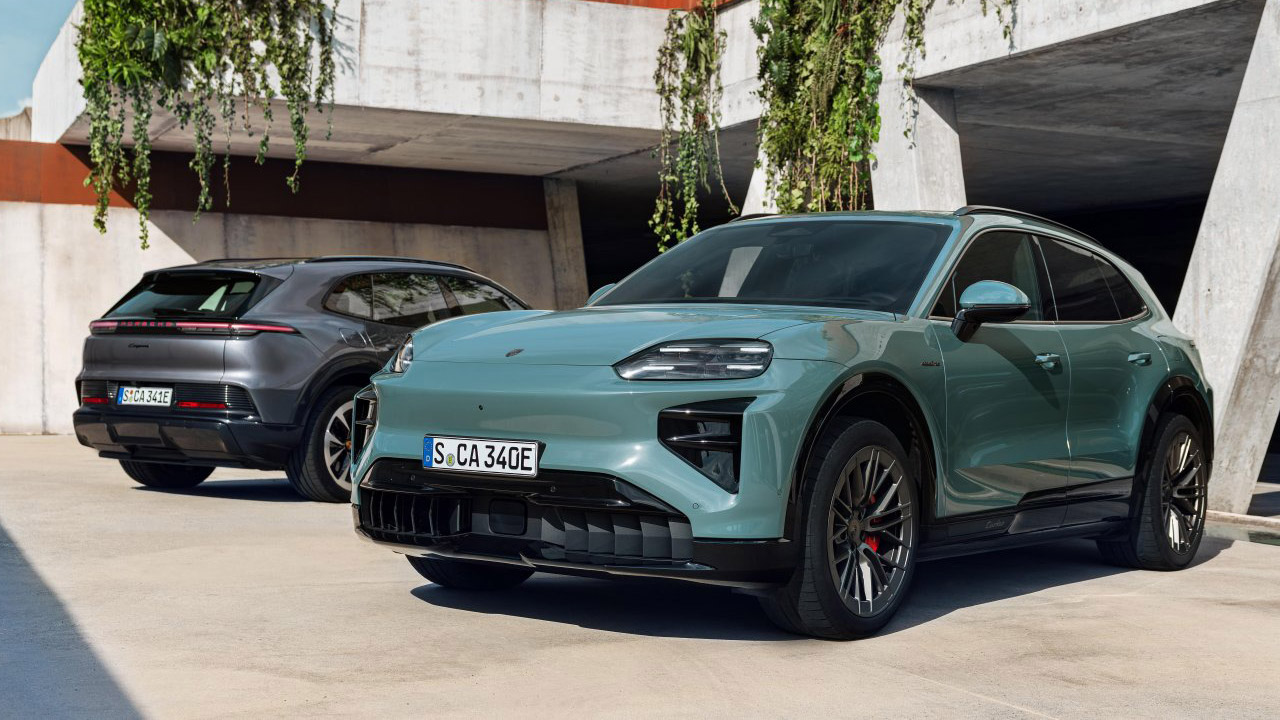
The standard Cayenne Electric starts at $109,000 before the $2,350 destination fee, while the Turbo Electric begins at $163,000. This compares to luxury rivals such as the electric BMW X5 and Mercedes EQE SUV, but with Porsche’s emphasis on track-ready performance. More versions are expected, including a mid-tier S model with approximately 592 horsepower.









